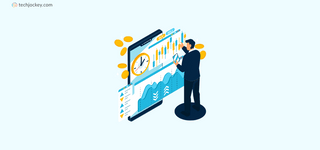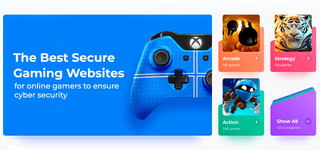Artificial intelligence (AI) is rapidly changing how businesses operate, especially with tools that process and generate human language. Two key methods leading this change are Retrieval Augmented Generation (RAG) and Large Language Models (LLM).
As companies explore smarter solutions, understanding the RAG vs LLM comparison thus becomes essential. Let’s break down these concepts in simple terms to help you choose the right fit for your business needs once and for all.
What is Retrieval Augmented Generation (RAG)?
Retrieval Augmented Generation, commonly known as RAG, is an innovative approach that enhances traditional language models by integrating a retrieval mechanism.
Rather than relying solely on a language model’s internal knowledge, which is fixed after training, RAG first searches through large external datasets such as documents, databases, or knowledge bases to find relevant information. Then it uses this retrieved data as context to help generate more accurate, focused, and timely responses.
This method particularly shines in applications where constant access to up-to-date or domain-specific information matters. By blending retrieval augmented generation with powerful language models, organizations can overcome one key limitation of many LLM models: their static knowledge cut-off.
What are Large Language Models (LLM)?
Large Language Models, or LLMs, are AI models designed to understand and generate human-like language based on extensive training on vast text corpora. These models, including well-known examples like GPT and other open-source language models, analyze patterns in data to produce coherent and contextually relevant text.
LLMs excel at creative tasks such as writing marketing content, summarizing information, or powering chatbots. However, because they rely on information accessible only during their training phase, LLMs can sometimes struggle with the latest facts or very specific knowledge that wasn’t part of their original datasets. This is where the limitations of plain LLMs without retrieval become clear.
RAG vs LLM: Key Differences at a Glance
Here’s a quick comparison highlighting how RAG enhances traditional LLMs in terms of accuracy, data freshness, and application scope.
| Comparison Point | RAG (Retrieval Augmented Generation) | LLM (Large Language Model) |
|---|---|---|
| Core Function | Combines data retrieval with generation for accurate, real-time responses. | Generates natural, creative text based on pre-trained datasets. |
| Knowledge Source | Pulls latest information from external databases or documents. | Relies on static, pre-existing knowledge within the model. |
| Accuracy | Delivers fact-based outputs with minimal hallucination. | May produce incorrect but confident responses. |
| Best Use Case | Ideal for research, compliance, customer support, and real-time updates. | Best for content creation, summarization, chatbots, and translations. |
| Strength | Ensures reliability, factual grounding, and domain-specific intelligence. | Excels in fluency, creativity, and broad-language understanding. |
| Overall Insight | Perfect for businesses needing data-backed, up-to-date insights. | Ideal for organizations focusing on creativity and general AI tasks. |
Key Differences Between RAG and LLM
All the key differences between LLM and RAG are listed below for your understanding…
1. Data Access and Knowledge Update
One of the key differences lies in how large language models and retrieval augmented generation access information. LLMs are trained on enormous datasets but have a fixed knowledge base that updates only with retraining. This makes them less effective for providing the most current information. Conversely, RAG integrates a retrieval system that fetches real-time data from external sources, ensuring responses reflect the latest facts, documents, or knowledge updates.
2. Response Accuracy and Factuality
LLMs can sometimes hallucinate, producing responses that sound plausible but are factually incorrect. This is because they generate text based on learned probabilities without verifying facts. RAG, however, retrieves relevant documents or data points before generating responses, leading to higher accuracy and greater factual correctness. This makes RAG especially suitable for applications requiring reliable, data-driven answers.
3. Flexibility and Adaptability
LLMs are highly flexible in their ability to perform various language tasks, including translation, summarization, and creative writing. Their versatility makes them suitable for broad applications. RAG models, in contrast, excel when specific, up-to-date, or domain-specific knowledge is needed. They are adaptable in contexts where the external data sources evolve regularly, such as news, research, or legal databases.
4. Model Size and Computational Resources
Large language models are often massive, requiring significant computational power for training and deployment. This can lead to high operational costs, especially for real-time applications. RAG frameworks typically pair a smaller, more efficient language model with a retrieval system, reducing resource consumption. They are more scalable for enterprises seeking cost-effective AI solutions without sacrificing performance.
5. Handling of New or Unexpected Queries
LLMs perform well on queries similar to their training data, but they may struggle with novel or unexpected questions that go beyond their internal knowledge. RAG systems are more capable in this regard, as they actively retrieve relevant data that can be used to generate accurate responses, thereby better handling new or specialized queries.
6. Domain Specificity and Customization
LLMs trained on general data can lack depth in certain specialized fields. Fine-tuning can help but often has limitations. RAG allows for easy customization by updating or expanding the external data sources, making it highly suitable for niche or vertical-specific applications like legal research or medical diagnosis support.
7. Response Speed and Efficiency
Running large models can be time-consuming, especially for complex tasks requiring significant processing. RAG reduces latency because it retrieves relevant info first, then generates concise responses. For workflows demanding quick turnaround, this approach is often more efficient.
How RAG and LLM Complement Each Other?
Rather than being competitors, RAG and LLM work beautifully together to push the boundaries of what AI can do with language. Think of the language models in artificial intelligence as highly skilled writers who have read a vast library up to a certain point in time but aren’t aware of new books published after that.
RAG acts as a hybrid researcher-writer: it retrieves the latest documents and facts, which help the language model generate accurate, informed, and context-rich responses. This boosts overall AI performance by combining the fluency and flexibility of LLM with the precision and update-ability of retrieval systems.
Many modern AI applications find success by pairing retrieval augmented generation with small language models, creating efficient, scalable, and precise solutions.
Business Applications of RAG vs LLM
Understanding when to use a large language model versus RAG can transform your business operations. For example…
- Customer Support: RAG-powered chatbots can search up-to-date company policies and product details before generating responses, providing accurate help. LLM-only bots excel in natural, friendly conversations but may lack current info.
- Knowledge Management: Enterprises use RAG to comb through massive internal documents and databases, enabling effective query answering and document summarization.
- Content Creation: Many marketing teams leverage LLM models for creative writing and content generation. Adding RAG improves content reliability by referencing real-time data or verified facts.
- Research and Compliance: RAG is invaluable in research assistance and legal fields where accuracy and source citation count. LLMs alone can hallucinate or stray from factuality without retrieval augmentation.
Which One Should You Choose: RAG or LLM?
The decision depends on your goals…
Choose LLM models if your priority is versatile, fluent content generation from a broad range of general knowledge with a fixed dataset.
Opt for Retrieval Augmented Generation if accuracy, access to up-to-date or domain-specific information, and reducing misinformation are critical.
Many businesses blend both techniques, embedding small language models into RAG architectures to efficiently handle complex tasks without massive computing costs. Smaller or open-source language models coupled with retrieval can, in fact, offer budget-friendly and customizable AI options.
Conclusion
Navigating the RAG vs LLM landscape is key to using modern language models in AI effectively. While each method has its own strengths, they definitely work best when combined.
Yashika Aneja is a Senior Content Writer at Techjockey, with over 5 years of experience in content creation and management. From writing about normal everyday affairs to profound fact-based stories on wide-ranging themes, including environment, technology, education, politics, social media, travel, lifestyle so on and so forth, she... Read more









